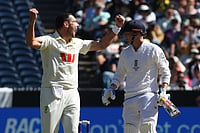This year has a lot of celestial treats for skywatchers. “Parade of Planets” is one such phenomenon that is expected to be visible on June 3 according to various news outlets. As June is already here and people are getting ready to witness this rare phenomenon where six planets will align, NASA says no such breathtaking view will be visible (atleast not for everyone).
Will there be any planet parade on June 3?
NASA has debunked widespread claims about this planetary alignment stating that most of the planets will be either too close to the rising Sun or too faint to be seen.
"You may have heard about a 'parade of planets' on June 3," reads a post by the @NASASolarSystem account on X. "Be aware that most of them will be either too close to the rising Sun or too faint to see."
Reports about a pre-dawn lineup of Mercury, Mars, Jupiter, Saturn, Uranus, and Neptune are going viral. While this alignment is technically true, four of these planets will be invisible to the naked eye, leading to a misunderstanding of what constitutes a ‘true alignment’.
A “Planet Parade” note by NASA reads: Some online sources have shared excitement about a "parade of planets" visible in the morning sky in early June (June 3 in particular). In reality, only two of the six planets supposedly on display (Saturn and Mars) will actually be visible. In early June, Jupiter and Mercury will be at or below the horizon in morning twilight and not visible; Uranus and Neptune are far too faint to see without a telescope, especially as the morning sky brightens. The closest thing to a planet parade will be June 29, when Saturn, the Moon, Mars, and Jupiter will line up across the morning sky.
When and where to watch parade of planets?
For those in the Northern Hemisphere, the planetary alignment will be visible in the eastern sky depending on weather conditions. High-powered binoculars will be necessary to view most of the planets. Mercury and Jupiter will be extremely low in the sky, Uranus will be fairly dim, and Neptune will appear star-like with binoculars. Mars and Saturn should be visible to the naked eye.
On June 3, early risers will see Saturn and Mars shining dimly in the east-southeast. Uranus and Neptune are too small and dim to be seen without high-powered telescopes, and Jupiter and Mercury will be lost in the Sun’s glare. NASA's tweet advises looking for reddish Mars between Saturn and the slim crescent Moon. However, this celestial event may not be spectacular enough to warrant getting up early just for that. A waning crescent moon can be seen with Mars and Saturn on any morning between now and June 4.




























